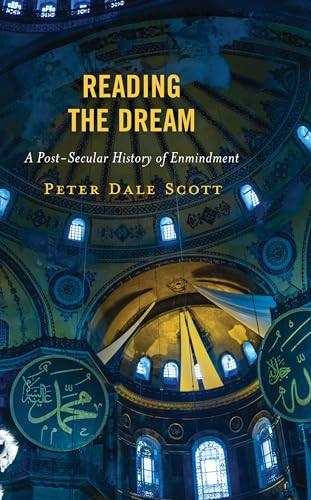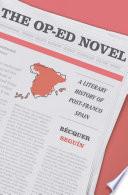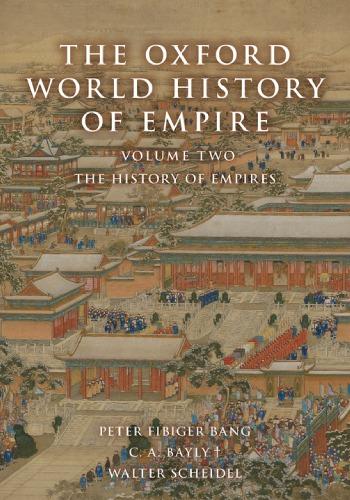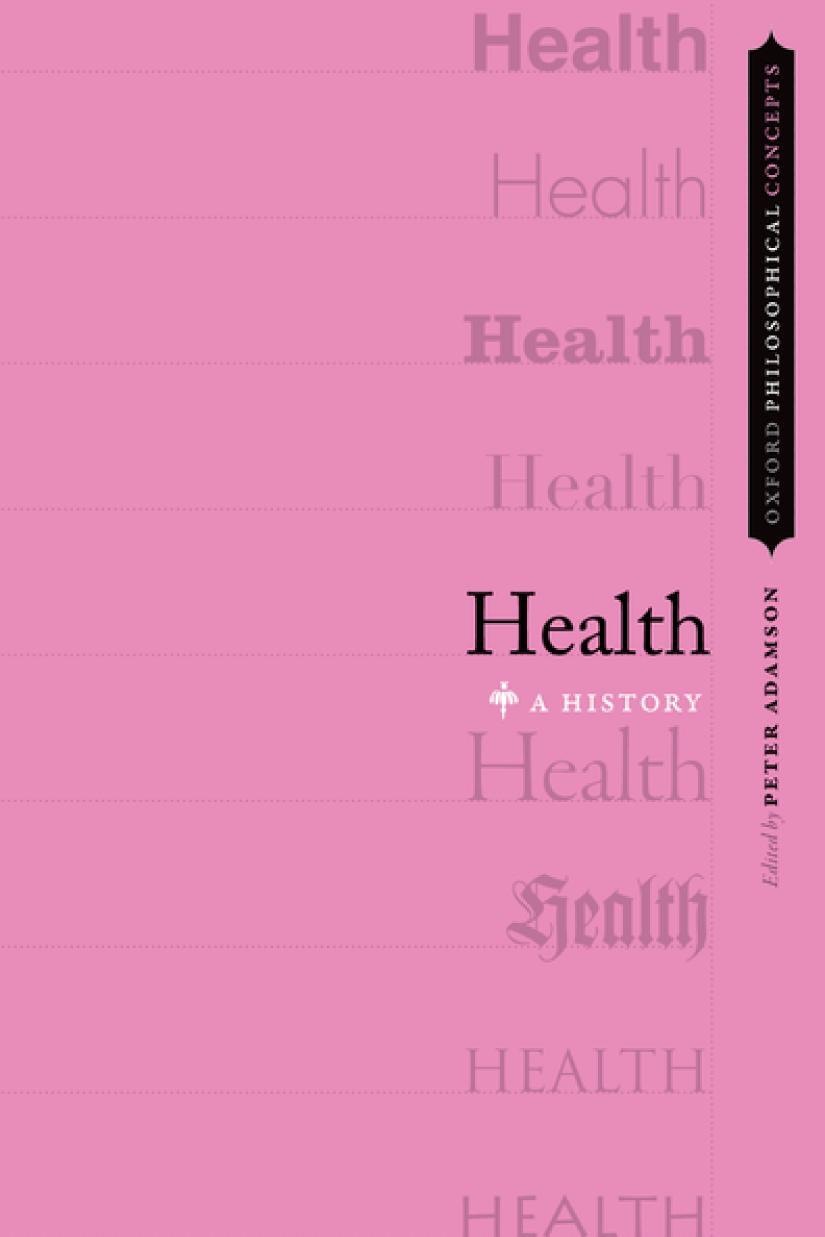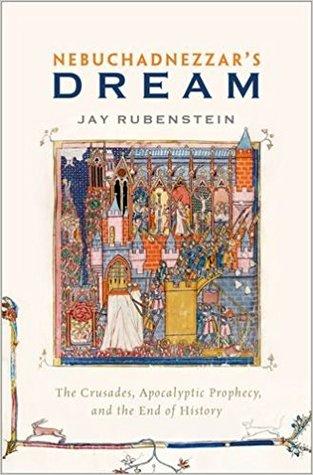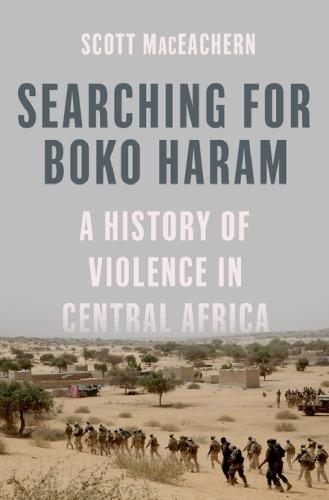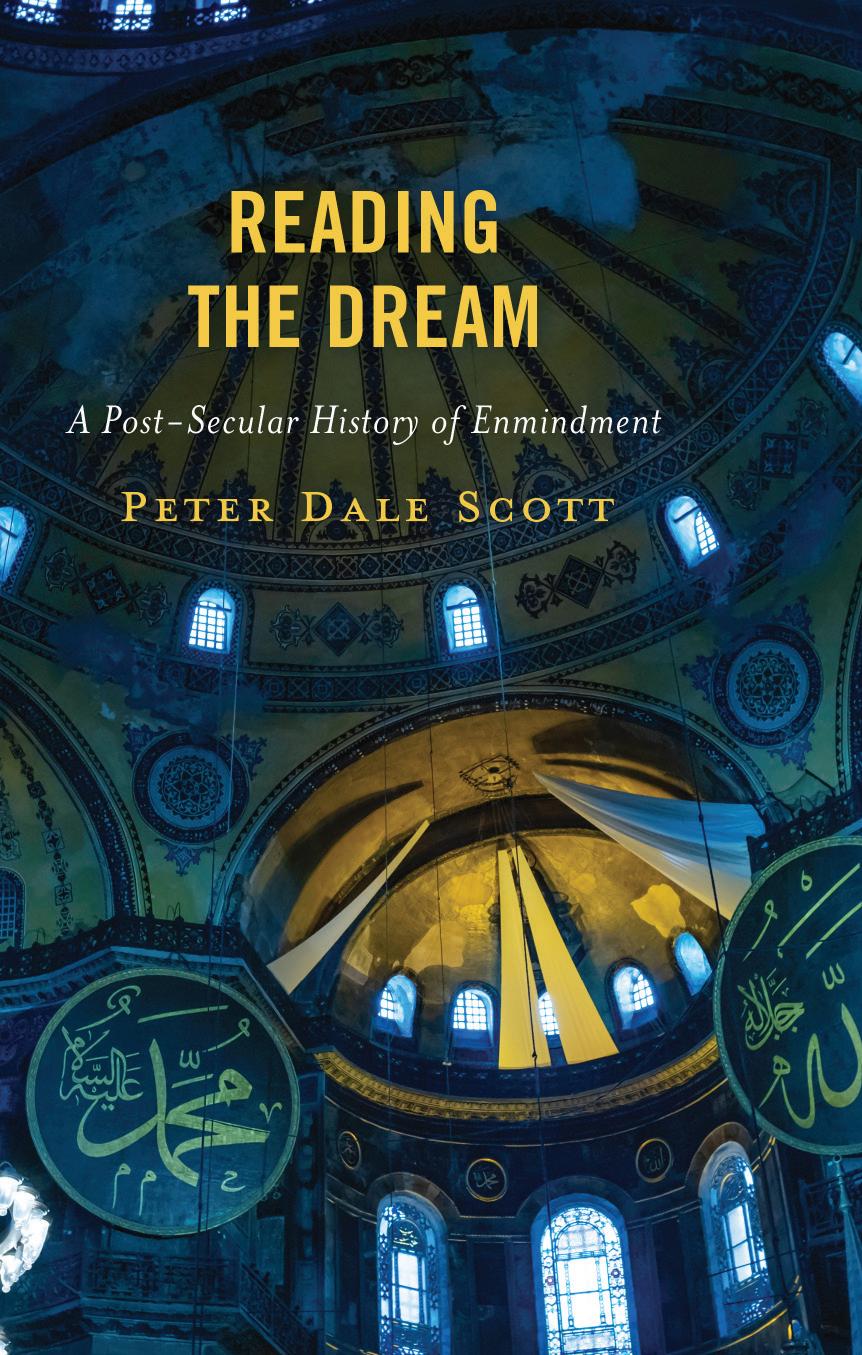Acknowledgments, Leading to a Very Brief Note on Method
The first person I must thank is Anna Sun, professor of religious studies, Duke University, who persuaded me to write the first essay that is now chapter 1, and also encouraged me to continue as it grew slowly into a book. Thanks also to the neuroscientist Dr. Friedrich Sommer for permission to quote from his helpful emails to me.
I must thank also the many people who read and commented on my project as it developed. These include, among others, Prof. Charles Taylor; Prof. Graeme MacQueen, founder of the McMaster’s Centre of Peace Studies at McMaster University; Prof. Gordon Teskey, professor of English literature at Harvard University; and my friends Daniel Ellsberg, Edwin Bernbaum, David Shaddock, Murray Silverstein, George Hammond, Brenda Walsh, Alison Jordan, Keith Eckiss, Karen Croft, Jesse Nathan, Steven Black, Freeman Ng, Suzanne Gardinier, my daughter Cassie Scott, and my granddaughter Marianna Scott. I must thank Keith Eckiss also for valuable help in revising my manuscript, and, once again, my reliable indexer, P. J. Heim.
Thanks to Google and Siri, I could write in a more holistic vein, observing my lifelong mantra that “the social sciences without the humanities are not scientific, while the humanities without the social sciences are not humane.” My method, such as it was, was intuitive, leading to my original subtitle, “A Post-Secular Poem in Prose.” I hope to see more books in future that will similarly move beyond the demands of “expertise,” leaving space for a more generalist approach.
My greatest thanks go, once again, to my wife Ronna Kabatznick, who introduced me to Judaism, meditation retreats, and Thailand—all necessary preconditions for the conception of this work.
Introduction
(This introduction was one of the last parts of the book to be written. Those who understandably find it to be slow going should probably begin at chapter 1.)
In 2023, I published my first important book, Ecstatic Pessimist: Czeslaw Milosz, Poet of Catastrophe and Hope. From writing that book, I was convinced of two points. The first is that a successful revolution in politics, such as that of Solidarity which Milosz contributed to in Poland, has to be preceded by a longer-term revolution in culture. The second is that a successful revolution, unlike failures such as Stalinism, must always be securely rooted in the culture of the past.1 Until recently, revolutions have been violent; but now, as evidenced by the victories of the American civil rights movement and of Solidarity in Poland, they can also be nonviolent—the result of persuasion rather than of coercion. America, foundering from the erosion of its democratic goals, is in a political crisis. The purpose of this book is to promote the chances that the needed response to this crisis will be, as far as possible, nonviolent and generative. More violence will mean more pain and perhaps disaster, but also a chance for greater cultural progress.
This aim is timely. The world is faced with both a pandemic and major climate change. These paired disruptions have in the past often marked major cultural shifts, including both setbacks to our mindset, defined by Webster as “outlook: set of ideas, values, and beliefs shared by a community,” and the emergence of new mindsets that in the past have significantly enhanced the old.
It is possible that the current urban American and global post-Enlightenment mindset now faces the risk of radical and even violent disruption. Like past mindsets, it needs to recover its healthy origins in our dialectical cultural evolution through past creative disruptions. This need was intuited by Simone Weil almost a century ago: “From where will a renewal come to us, to us who have spoiled and devastated the whole earthly globe? Only from the past, if we love it.”
Introduction
Simone Weil, until recently, was an outlier in the discussion of civilizational discontents (except among poets). Her desire for a cultural renewal marks her as what I shall call a “minder,” someone who cares about defects in our social-cultural environment and is devoted to repairing them. Perhaps the most neglected part of our cultural development is the instructive evolutionary history of our culture—a more fundamental history, I believe, than our conventional histories of political evolution.
The term minding is not used to cover all mental activity. For that we have a more general term, mentation, “mental functioning, activity of the mind.” This includes not only thought but also dreaming by day or night, and even the necessary activity of clearing the mind by forgetting.2 I shall suggest in a moment that the mental activities of thinking and dreaming correspond to the left and right hemispheres of the human brain, respectively. For many people, thinking and dreaming have little to do with each other. But insofar as the two are synergistic, the result is creativity, producing great poets and other artists, who in turn produce advances in culture.
This synergistic mentation of thought and dream is what I mean by enmindment. This book will argue that this coalition of dream and thought in enmindment is the source of creative evolution in the individual, and also in the supporting culture in which we develop. It is for this reason that poets in particular play such a large role in the evolution of culture—as Czeslaw Milosz acknowledged in his audacious claim that “the poetic act both anticipates the future and speeds its coming.”3 But “poetic” here must be interpreted very broadly, as a spectrum from the Declaration of Independence, to Martin Luther King’s dream, to the songs of Bob Dylan or Leonard Cohen.
I will suggest that the ideals of the eighteenth-century Enlightenment, in its current decadent phase of left-hemisphere and supposedly value-free social sciences, have become overly rational; they need to return to the larger perspectives of expanded, left- and right-hemisphere enmindment. It is a symptom of our somewhat skewed mindset that the definition of mentation in one recent dictionary excludes such synergy and restricts mentation to mean only “the process of using your mind to consider something carefully.”4
In like fashion, Weil is sometimes referred to as an “intellectual,” an awkward term for someone so focused on dreaming.5 It is a symptom of the bias in our current science-oriented mindset that the most available terms for such a minder or minders are “intellectual” or (in the plural) “intelligentsia.” The English noun “intellectual” was influenced by the French term intellectuel, while “intelligentsia” began as a Russian term anglicized in the 1880s. Both the French and the Russian terms connoted groups distinguished by their alienation from their culture’s spiritual and religious legacy.6
Social scientists have tended rather to follow Max Weber in looking to the future rather than the past for a solution, one in which “spiritual leaders”
would heal the disenchantment (Entzauberung) of the modern episteme, that is, the cultural rationalization and devaluation of religion.7
On this point, Weber’s disciple Karl Mannheim would eventually disagree—over what might sound like a technical issue but in fact involved an aporia at the very heart of this book:
“Spiritual creativity” for Weber meant the ability to create a cultural synthesis of meaning, precisely what Mannheim rejected. Mannheim did follow Weber in dividing thought into two spheres, that of the exact natural sciences . and that which was “existentially connected” (seinsverbunden). . . . unlike Weber, he believed that this [second] sphere was not characterized by a potential organic unity, but rather by competition.8
This book will see these two spheres as yang and yin, corresponding roughly to the two hemispheres of the human brain: the sphere of science (yang) to the logical and analytical activities associated primarily with the brain’s left hemisphere, and the less definable residual (yin) processes (or seinsverbunden), often thought of as “irrational,” associated primarily with the right hemisphere. In this I subscribe to the view of Iain McGilchrist that “the left hemisphere tends to deal more with pieces of information in isolation, and the right hemisphere with the entity as a whole, the so-called Gestalt.”9
Both Weber and Mannheim, in their different ways, recognized that the modern cultural mindset was excessively yang. It had suffered, through what Weber called “disenchantment” (Entzauberung), a weakening of the yin or irrational in us, what C. S. Lewis called “the longing for that unnameable something, the desire for which pierces us like a rapier at the smell of a bonfire, the sound of wild ducks flying overhead.”10
This book aims to help move us again toward what has been briefly achieved at pivotal moments in our past cultural development: a better synergy of yang and yin, our analytical powers and our longings. And it will accept that these two tendencies correspond to the popular sense that “there’s a distinctive analytic and verbal style of thinking associated with the left hemisphere of the brain, and a more holistic, creative style associated with the right.”11
Karl Mannheim, whose response to the disruptions of the war was also that society needed a spiritual renewal, was convinced—I think rightly—that intellectuals were too embedded in the prevailing ethos to play that role. With György Lukács, Mannheim formed part of the postwar Sonntagskreis, for whom “the way forward was seen to be through the spiritual renewal entailed in a revolution in culture.” Later Mannheim moved away from traditional social science and played a prominent role with T. S. Eliot in “The Moot,” a
Introduction
Christian discussion group in England concerned with the role of religion and culture in social reconstruction.
T. S Eliot’s The Waste Land had indeed been a leading expression in poetry of the disenchantment that Weber perceived in the modernist ethos. But Eliot’s prose searches for a remedy have never attracted much attention, and the same is true of Mannheim’s protracted collaboration with him.12 Eliot’s Notes towards the Definition of Culture, the major product of this collaboration, did little to enhance his status as a cultural icon.
But there are ideas in it which, freed from their unabashedly reactionary context, have inspired this book. One is Eliot’s summary observation that “culture may . . . be described simply as that which makes life worth living.”13 Culture is to the mind what the atmosphere is to the body: the ambience necessary for an active survival, and for our development into what Edmund Burke called the “second nature” of our adulthood.
Another is his claim that a culture, like an atmosphere, should be “healthily stratified.”14 In George Orwell’s words, “The essence of his argument is that the highest levels of culture have been gained only by small groups of people.”15
To extend the atmospheric analogy a little further, this book will explore how cultures, like atmospheres, are renewed both at the bottom, for example, by Christianity or blues music (cf. the oxygen of rain forests), and at the top, by canons of scriptures and classical epics (cf. atmospheric rivers).
Just as there is fresh air and stale air, good and bad air, so it is with cultures. And just as totally clean air, not fouled by smog or volcanic ash, is desired everywhere and found nowhere, so it is with pure culture, the uncontaminated aspiration of inspired minds. (When in this book I speak of cultural evolution and argue that progress in history is primarily cultural rather than political, this is the culture of which I primarily speak.)
Eliot’s version of this claim was to speak of “the culture of a people as an incarnation of its religion.” He then added, very problematically, that “it is only when we imagine our culture as it ought to be . . . that we can dare to speak of Christian culture as the highest culture . . . that the world has ever known.”16 But it was a characteristic limitation of Eliot’s vision that he looked for the idea only in the past. To quote Czeslaw Milosz, in Eliot “a certain norm is placed in the past . . . the future does not promise anything good.”17
Nevertheless, I can still endorse Eliot’s wish to combat the contemporary error “that culture can be preserved, extended, and developed in the absence of religion.”18 Here his thinking aligns with the earlier efforts of both Weber and Mannheim to correct the disenchantment of modern society.
Weber’s perception of disenchantment as a devaluation of religion affecting modern society was accurate. But many today have been slightly misled by it, failing to notice that the void created by this devaluation also acts as a
vacuum to encourage its dialectical opposite—a search for re-enchantment. The last two decades alone have produced no less than thirteen different books with the word “re-enchantment” in their title or subtitle.19
These books by themselves are unlikely to achieve this dialectical change. But their numbers attest to a remarkable feature of our global culture that is explored in this book. Our culture is a self-correcting process, continuously losing old features in a zigzagging, dialectical cultural evolution that I call “ethogeny,” and then beginning to compensate for what has been lost. Like so much else in the physical universe, our cultural evolution both leads to periodic crises that disrupt its orderly development and also, responding to our human psychological needs, generates what is needed to return toward the unattainable goal of cultural equilibrium.
To be conscious of this process can help each of us in our own personal moves toward an unattainable equilibrium. We can see that the world’s social disruptions today are replicating those that motivated the spiritual quests of Weber and Mannheim after World War I. And it is apparent that the anxieties caused by this social and political breakdown are already generating compensatory searches in our dialectical culture.
Reading the Dream explores this transpersonal dialectic at length. It will argue that the fall of the Roman Empire emerged from the excessive disparity of wealth (“public squalor, private opulence,” wrote Sallust, d. ca. 35 BCE), the widespread degradation of culturally excluded lives, and the progressive inanition of meaningful communal goals. These deficiencies energized the spread of Christianity, the new religion that more than others embraced among its members slaves and their aspirations.20
After the fall of Rome, the so-called Dark and Middle Ages, while suffering a millennial lapse in yang intellectual inquiry, compensated for this in such ways as reducing wealth disparity and evolving toward a more egalitarian social order. And the restoration of intellectual inquiry in the Renaissance disrupted the medieval attempt at equilibrium, only to see the revival of both old and new religious practices and inquiries, such as Rosicrucianism and later Romanticism.
This is a feature of our current discontents. Especially before World War I, liberal intellectuals tended to assume that religions were relics of a pre-enlightened era, destined to wither slowly away. Today, after the disruptions of two world wars, it is the future of Enlightenment rationalism that seems more at risk. Since the Trump campaign of 2016, newspaper headlines refer frequently to a “post-truth era.”21 On a more intellectual plane, minders, following an influential paper by Jürgen Habermas in 2008, have referred to the present as “post-secular.”
Introduction
Habermas distinguished between two divergent tendencies: nostalgic fundamentalism and innovative syncretism. I prefer to focus on the age-old dialectic underlying them, of coercion being supplanted by persuasion, and to contrast nostalgic violent retro-spirituality (in states like Iran and India) with the forward-looking generative spirituality of those who also seek guidance from the cultural momentum of the past.
As exemplars of those who would give this redirection shape, I would cite three recent thinkers. The first is Habermas, who anticipates that in a post-secular era a new peaceful dialogue and tolerant coexistence between the spheres of faith and reason must be sought in “an inclusive civil society in which both equal citizenship and cultural difference complement each other.”22
The second is Charles Taylor, who in A Secular Age has argued that modern secularity is not a “subtraction story,” an enduring residue after the disappearance of “illusions,” but a transient ideology, “the fruit of new inventions, newly constructed self-understandings.”23
The third is Czeslaw Milosz, who once wrote in a poem that,
If there is no God, [man is still] not permitted to sadden his brother, By saying that there is no God.24
Like Habermas, Milosz argued that culture should be more tolerant and open-minded. As a poet, he was highly aware of two sources of thinking in his divided brain, one logical and another, extralogical and often surprising him, that was the source of his poetry. As already noted, this book will defend Milosz’s claim that “the poetic act both anticipates the future and speeds its coming”25—a more holistic inspiration defying logic but leading, I shall argue, to enduring change.
With Milosz’s twofold mode of thinking came a parallel doubleness in his personality, between a self that was secular (the Settembrini of Thomas Mann’s The Magic Mountain) and a self that was other-worldly (Mann’s Naphta).26 Late in life, he wrote that this underlying psychological doubleness was widespread, and hence fostered an interactive doubleness in developed culture as well (what Octavio Paz once called “a tradition against itself”).27
As a youth Milosz saw Settembrini as dominant in his personality. In his old age he had shifted towards Naphta. But consistently in his life he argued for the need to maintain balance between conflicting attitudes; and he approved a folkloric condemnation of “whoever says he’s 100% right” as “a fanatic, a thug, and a rascal.”28 As I wrote in Ecstatic Pessimist, “Milosz’s search for balance, his desire ‘to retain both ends of the contradiction”… may offer a ‘way ahead’” for the needed reconciliation of conflicting elements in our sorely divided culture.”29
And in The Land of Ulro, Milosz drew on the insights of the Romantic poets Blake and Mickiewicz “to trust in ‘faith and love’” as the way to heal the current “dichotomy between the world of scientific laws—cold, indifferent to human values—and man’s inner world.”30 This mitigation of one-sided judgment would permit us “to accept the world, not because of its order, which has been violated, but because it holds out the hope, as in the [Jewish] Cabala, that it will be followed by tikkun, a return to order.”31 His book closes with an appeal for tolerance and incantatory talk of “an idyllic earth where ‘the hay smells of the dream.’”32 This dream reminds us of C. S. Lewis’s “longing for that unnameable something, the desire for which pierces us like a rapier at the smell of a bonfire.” On a more practical level, I shall trace that dream also in Martin Luther King’s “arc of the moral universe” that “bends toward justice.”33
TOWARD A RECONCILIATION OF YIN AND YANG
There is a tendency today to see as inevitable and tragic the conflict in the world between two kinds of enlightenment—one through faith (yin) and one through science (yang)—or in practical terms between ISIS and the West.
To the West, China exemplifies this conflict, with the government’s active oppression of Buddhists in Tibet, Muslims in Xinjiang, and the Falun Gong in the heart of China.34 But Europe has also seen a heightening of religious tensions, exacerbated by a large influx of refugee and other Muslims. We see the same heightening in the Muslim world itself, from Algeria, Egypt, and Syria in the west to Malaysia and Indonesia in the east.
America itself is no exception to this global picture. A nation once celebrated for tolerance and nation building has seen its national consensus subside yet again into two competing epistemes,35 each convinced of the perfidy of the other. Among the underlying causes of this conflict is a falsely imagined split between “faith” and “science.” The country that united to fight against Hitler is deeply divided today over faith-related issues like abortion rights. We have also seen a return of overt racism and anti-Semitism.
This book will not go near such polemical issues. Instead it will describe the cultural origins of this current global conflict in an account which I hope will not only be readable by some on both sides but might even contribute a little to their partial reconciliation. For yang and yin mentalities are most fruitful when flourishing together and, ideally, interacting.
I hope to show that similar periods of global cultural conflict have occurred repeatedly before, in ways that have been not only seriously disruptive but
also ultimately beneficial to cultural evolution. Moreover, that evolution, though diverse, has not been random and unpredictable; it has shown, I believe with Milosz, a deeper pattern of development, one that overall is mysteriously coherent if not purposive.36
I am struck by the analogy to the pattern in the biological evolution of the human species to which Ernst Haeckel (d. 1919) and Charles Darwin (d. 1882) gave the term phylogeny, “the pattern of historical relationships between species or other groups resulting from divergence during evolution.”37 Inspired by that analogy, I have borrowed from ethologists (people who study animal or human behavior) the term ethogeny, by which I mean the significant underlying pattern of human cultural development (both in an individual and, primarily, in the cultural evolution through history of the human race).38
I began this book (which was originally just a short essay) as what I call a poem in prose, in which I was willing to trust the yin guidance of my prosaic muse, but had no idea where, if anywhere, my writing would proceed. But finishing this first volume has convinced me that the conflict at its heart will be lessened when people accept that both faith-based and scientific searches for enlightenment are finite, fallible, and enriched by each other.
This book, as a poem in prose, is a subjective attempt to understand these yang and yin drives both in myself and also in our culture or ethos, which, as Burke wrote long ago, is the source of our “second nature.”39 Meditation on the uneasy comity between our first and second natures has persuaded me that, despite recent evident setbacks on the surface political level to the goals of peace and global cooperation (notably by election in many countries of reactionary leaders), we can still see a deeper progress toward enmindment in our slow cultural development over the centuries—progress that has increasingly been nurtured by our creativity or “third nature”: our moreness, our human need to be more than we are. This need is universal; it is also particularly urgent today.
A clarification: versions of this moreness also characterize our first nature or id (the desire to befriend, to procreate, and to “best” in battle) and our second nature or ego (the desire to work well, to build, and to be loved, remembered, or famous). But the best in our first and second nature cherishes a third nature, colored less by id or ego than by something striving to escape id and ego—pure moreness if you will.40
The cumulative result of acts of moreness is positive cultural development or ethogeny. And with the cultural development of the collective mind, each of us has the opportunity to develop to a marginally higher level. Legacies of a less developed past, like lynchings in America, may not die out altogether, but they cease to define a sociocultural norm.
Thus, there is a cultural history of the mind, which builds on the much slower biological neurohistory. This book, as a yin poem in yang prose, is an example of that cultural history—sustaining the importance of our collective dreaming and also reading that collective dreaming in the light of its historic evolution.
I freely admit that it is not the only possible history. Someone else (or even I) could have written a dialectically different poem in prose from the same evidence, pessimistic where mine is ultimately optimistic. Philip Larkin once wrote an excellent poem of cynical disenchantment, “Aubade” (“I see what’s really always there: / Unresting death, a whole day nearer now”). And there is really no other refutation of it than to say, as Milosz said of “Aubade,” “It’s a little cheap to fall into sarcasm, irony. That emptiness and cruelty, which is the basis of Larkin’s weltanschauung, should be accepted as a basis upon which you work towards something light.”41
I myself would give Larkin full marks as a minder. He minded the darkness, and that helps us to appreciate light. But I am tempted to say that Larkin’s egotistical minding was notably deficient in moreness.
CULTURE EAST AND WEST: ETHOS AND TIANXIA
As I complete this volume, it is in a context of a global pandemic, compounding the chaotic U.S. presidency of Donald Trump. Modest agendas to deal with the impending crisis of climate change are barely being met. And more and more it appears that after seven decades, the so-called Pax Americana, comparable to the nineteenth-century Pax Britannica, may now be waning.
There is a prevailing sense of crisis, which at least has the advantage of increased public consciousness. Americans are more aware than before that the U.S. social structure, while conferring perhaps unprecedented social benefits on many, is also experiencing an unprecedented disparity of wealth, which (as in so many decaying cultures before it) leaves many in poverty, oppressed, and angry, both at home and abroad.
The same can probably be said of all social structures that, at one time or another, have for a while been dominant in the world and then declined. The examples of Britain, Spain, Rome, and even Athens spring immediately to mind. To say this could lead to an attitude of acceptance and resignation. There are those, however, who would like to do better than that.
One such person is the noted Chinese scholar and thinker Xu Jilin (许纪 霖), a true minder who, from what I have read of him, could apparently be at home in the West. It is relevant that for six months in 2002–2003, he was a visitor at the Harvard-Yenching Institute in Cambridge. Xu has described
Introduction
in contemporary China the same mix of liberation and oppression that I have referred to just now in America.
And in looking forward to a better world, he begins by making the distinction that underlies this book, that between the “structure of power” (or state) that governs us and the “structure of values” that we each internalize as our ethos or second nature. The former is very fallible and in the long run ephemeral. The latter (which I would not in English call a “structure”) abides and is capable of historical developments that can lead to improvements in both individuals and the state.
To his “structure of values,” Xu assigns the three-thousand-year-old Chinese term tianxia, meaning “(all) under Heaven”:
As a value system, tianxia was a set of civilizational principles with a corresponding institutional system. Here, the state was merely the political order of the dynasty, while tianxia was a civilizational order with universal application. It referred not only to a particular dynasty or state, but above all to eternal, absolute, and universal values. The state could be destroyed, but tianxia could not. Otherwise humanity would devour itself, disappearing into a Hobbesian jungle.42
Translating tianxia into English is difficult.43 Literally, tianxia means “(everything) under heaven.” But for me there is a big difference between thinking about “everything under heaven” and thinking about “everything.”
The first mode of thinking is for me closer to how most humans think, for it encompasses two elements: both everything that is, the status quo, and also something more—heaven—heaven being traditionally associated (in both Chinese and English) with all the values we have slowly acquired through history as aspirations yet do not fully embody. That doubleness of realized and unrealized is the world we humans live in.
(Xu anchors his vision of a China under tianxia to an idealized memory of China in the so-called Qing golden age of the seventeenth and eighteenth centuries,44 when China was more tolerant of its minorities:
When China was great in the past, China was open, not closed, and if China wishes to be great again it most adopt the same posture because civilizations by definition must be universal.45
Other Chinese scholars share this pacific dream.46)
DOUBLENESS AND MORENESS
In chapter 1, I discuss this “something more,” this moreness, in terms of both our individual aspirations to be “more than we are” and also the social drive
to repair the inadequacy of what is now through a shared search for an otherness. The result has been religion, in two senses, both as a fact (itself in need of repair) and also in the very human need to repair.
Moreness for me builds from directional values that have already been established to others still to be striven for. This mix of immanence and transcendence in the religions of the West is what moved me to describe their evolution in time as The Way of Moreness, the original title of this book.
With all this in mind, what single word can we use to translate tianxia? “Civilization” is too specific, while “culture” is too amorphous. (Even heroin addicts have a culture.) What exists both here and in China is a kind of prevailing moral and social order, partly realized and partly aspirational. For this we sometimes use the recently anglicized word mentalité, dated by the OED to 1908. But I shall more often use, with its focus on “spirit,” the older term ethos, defined by the OED as the “characteristic spirit of a people, community, culture, or era as manifested in its attitudes and aspirations” and dated by it back to 1835.47
Today, like many thinkers around the world (such as Jürgen Habermas), Xu envisages a “new tianxia that will emerge in the form of universal values”—a global ethos, in short, incorporating and transcending the best of its predecessors.
It is a thesis of this book that the goal of a global ethos has always been latent in our culture, not as a predestined outcome but as an optimal direction when established values, not under undue stress, expand to enlarged contexts. For example, a phrase like “Love thy neighbor as thyself” (Lev. 19:18) was limited at first by its context in both area and intensity of emotion. It has a different scope today, when a post from Berkeley on Facebook can be answered, empathetically, by a stranger in East Timor.
I do not wish to dispense with the useful terms civilization and culture, but I do want to use them neutrally. There was a time when civilization (“human cultural, social, and intellectual development when considered to be advanced and progressive in nature”48) was distinguished as being both quintessentially more urban and more advanced than culture (“the distinctive ideas, customs, social behaviour, products, or way of life of a particular nation, society, people, or period”).49
Sigmund Freud disdainfully rejected the distinction. I shall retain it, but without distinguishing hierarchically between the two terms. Indeed, the thesis of this book is that both civilization (more protean and urban) and culture (more traditional and rural) are vital and progressive when active as processes, and already needing amendment when, as civilizations and/or cultures (plural), they lapse into mere states. And the deep pattern of their evolution is that, in some historical periods or shifts (including China today), there is indeed an evolution of yin rural culture toward yang urban civilization
Introduction
(or what I will call urbanity, 50 in place of the now slightly archaic civility). That was the trend in the nineteenth century, which celebrated this particular movement as “progress.”
But in some other periods, notably but not exclusively the European Dark Age, the progressive evolution was in the reverse direction, from urban to rural, yang toward yin. To give just one example, “civilized” Rome, in order to harden the emotions of its warrior citizenry, staged “games” where one went to derive pleasure from watching humans kill each other or be devoured by lions. At the outset of the so-called Dark Age, rural barbarian Vandals swiftly terminated these “civilized” (urbanized) customs.51
The chief downside of urbanity and its leisured freedom has been slavery, flagrant in the past but still very much with us, now usually in the form of wage slavery. We must not forget that the rise of urban civilization, both in China but especially in the West, was accompanied by an increase in slavery. In Athens and later in Rome, both civilization and slavery reached their zeniths and then declined together. The end of this volume will describe how the gradual reduction of chattel slavery in our domestic societies has hitherto always been accompanied by the expansion abroad of its equivalent—as, for example, the slave trade—in other forms and places.
Xu Jilin’s essay about tianxia is motivated by a concern that China’s recent economic successes have once again raised China, not for the first time, to a position where it can dominate and oppress countries around it. Xu’s retrospective review of the history of tianxia is explicitly an effort to return China to an earlier outlook when “values were universal and humanistic rather than particular”—like those of the other religions Karl Jaspers (d. 1969) grouped together as “axial [i.e., pivotal] civilizations,” each of which “took universal concern for the whole of humanity as its starting point.”52 (I will argue that Jaspers’s “Axial Revolution” of circa 500 BCE was only one of successive pivotal moments about every half millennium—and not even the first.)
I cannot close this section without acknowledging the parallel global importance of Chinese poetry, especially from the eighth-century High Tang era. That influence continues. The following poem by Bei Dao, now a poet in exile (like so many great poets before him), is clearly addressing this book’s yang-yin themes of urbanity and rusticity, creation and disruption:
a sower walks into the great hall it’s war out there, he says and you awash in emptiness you’ve sworn off your duty to sound the alarm I’ve come in the name of fields it’s war out there
I walk out from that great hall all four directions a boundless harvest scene I start planning for war rehearsing death and the crops I burn send up the wolf-smoke of warning fires
but something haunts me furiously: he’s sowing seed across marble floors53
THE CHINESE AND WESTERN ETHOS: DIFFERENCES AND COMMONALITIES
America, launched in a spirit of liberation, equality, and noninvolvement in foreign wars, is now also in a posture of global domination, increasingly at odds with China. I believe that a return to America’s ethical heritage, a return not just to the nation’s inauguration but to the first origins in antiquity of its ethos, would help resolve many of the serious problems besetting it both domestically and internationally.
And here we should note a difference between the traditional Chinese tianxia, which has been relatively centralized, continuous, and (especially in very recent years) inflexible, and the Western correlative, which has always been relatively polycentric, pluralistic, self-questioning, and above all dialectical.
By dialectical, I mean that in our ethos or culture, elements of dominance have been offset by elements of resistance, especially in our religion. I shall argue in this book that the ethos of every literate society is to some extent dialectical. This is true also of China, where the yin opening of the Taoist Daodejing (“The Tao [Way] that can be Taoed is not the true Tao”) can be read as an implicit dialectical criticism of yang Confucianism.
I believe that every specific ethos or way, including China’s, is also dialectical in that its fate, once established, is to age, lose its inspiration, become weaker and/or more corrupt, and be partially displaced and corrected by a new manifestation—as for example in the neo-Confucian revival of Zhu Xi (1130–1200) or the Protestant Reformation. In other words, the Way, once established, is mortal and degrades into ways.
Words like culture, civilization, and enlightenment, which originally referred to developmental processes, become accepted, stabilize, and eventually refer to slowly decomposing epistemes. Perhaps we should distinguish the latter (where we are now) by the terms civilhood and/or enlightendom.
Introduction
In time, the decomposition becomes evident as breakdown, successful challenges, and the prelude to a new pivotal shift.
The supplanting of Han Confucianism by the Five Pecks of Rice movement of religious Taoism (ca. 140 BCE–150 CE) is one example of this dialectical transition or shift. The fifteenth-century Protestant Reformation is another. I discovered that initially these shifts, viewed in a wide historical context, were not local and episodic; each one was widespread, each one was part of a roughly contemporaneous shift in the Eurasian map, and all together they shared a deeper pattern. In this respect, one can compare, for example, the return to a simpler unsophisticated piety that one encounters in both Martin Luther (1483–1546)54 and his contemporary, the pivotal Confucian reformer Wang Yangming (1472–1529).55
These shifts can be described as pivotal because they are revolutionary in the original sense of turning back in search of something lost. But they are also disruptive because each one involves the dialectical displacement, often violently, of the ethos that preceded it. Writing this book has persuaded me that these shifts between ways occur with some regularity, every half millennium or so, right across the literate world. By this calendar we may be currently due for a shift, and there is abundant evidence to confirm this. What remains to be seen is whether the shift will be relatively continuous and painless, or relatively violent, disruptive, and (as in 536 and the 1340s CE) lead to great loss of human life.56
More importantly, the overall pattern I see is not one of recurring loss and recurrence of different ways, as Arnold Toynbee seemed to suggest, but of cumulative and essentially uninterrupted evolution of one Way toward its latent goals, as suggested by Hegel. To be more precise, the history of states (the structure of power) is chaotic, but the underlying history of our global ethos is one of dialectical ethical evolution, or what I call ethogeny.
BIBLICAL PROPHECY AND SOCIAL PROGRESS
There is nothing in China that matches the centrality of the Jewish prophetic protests against a status quo, exemplified by the Lord’s words empowering Jeremiah as a prophet:
Behold, I have appointed you over the nations and over the kingdoms, to uproot and to crush, and to destroy and to demolish, to build and to plant. . . . And I, behold I have made you today into a fortified city and into an iron pillar, and into copper walls against the entire land, against the kings of Judah, against its princes, against its priests, and against the people of the land. (Jer. 1:10, 18, emphasis added)
It might perhaps seem anachronistic to invoke the spirit of Jeremiah in an age of coronavirus and global warming, but according to Martin Luther King,
Religion, in a sense, through men like Jeremiah, provides for its own advancement, and carries within it the promise of progress and renewed power. . It is obvious that if we judge Jeremiah by the ordinary standards of the world, his work was a failure. He was lightly esteemed in life. He became the supreme example of what Deutero-Isaiah called the suffering servant. He was despised and rejected, a man of sorrows and acquainted with grief. But in after years his unheeded prophecies became the favourite book of the scattered Hebrew race. Many of the Psalms . . . re-echo his words, and depict scenes such as only Jeremiah could have passed through. It is for these reasons that Jeremiah came to be regarded as the greatest of them all (Matt. 16:14, John 1:21).57
I believe that the civil rights movement’s successes against the segregationists who then dominated the American South can be attributed to its secure grounding in this centuries-old Judeo-Christian ethos, against the parochial ideology of its oppressors. This is just one example of the dialectic in our ethos that makes some causes prevailable, especially against countervailing powers, and others not.
The success of the civil rights movement in the 1960s exemplifies the way in which our ethos has evolved over time. Earlier examples include the successes of activists, marginal and even detested at first, in generating movements to outlaw first the slave trade and then chattel slavery, or to achieve women’s suffrage.
In acknowledging that, at least in the West, nonviolent values have in the right circumstances occasionally prevailed over violent power, we must slightly modify for our ethos what Xu Jilin had to say about tianxia. In opposing the “structure of power” to the “structure of values,” Xu reflected the age-old split in Chinese society between the violent world of wu—force, arms, violence, the army, and oppression—and the world of wen: civility, letters, intellectuals, and persuasion.58 Confucian China respected intellectuals and trained them as mandarins. But their function in society was defined as to advise, not to generate policy. Western-influenced protesters in Communist China and Hong Kong, espousing a cause not yet grounded in the Chinese tradition of tianxia, have so far failed to overcome this dichotomy.
In the West, most demonstrably since the Renaissance, those intellectuals who choose to be minders have played a visible and increasing role in mobilizing public opinion to change policies. On occasion—as in the American Revolution—they have even created new governments. And Martin Luther King was right to see these recent secular developments as grounded in the
